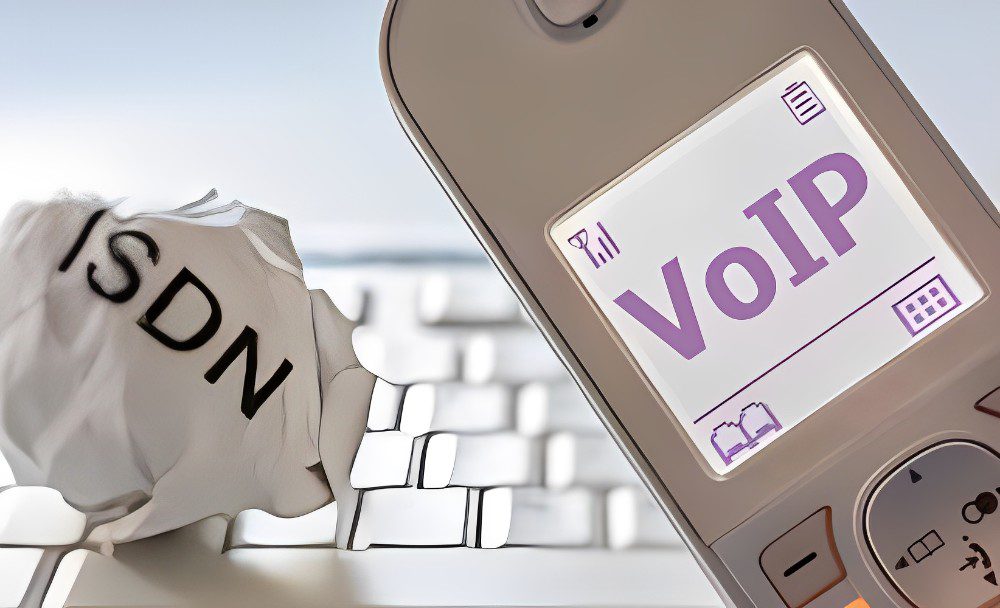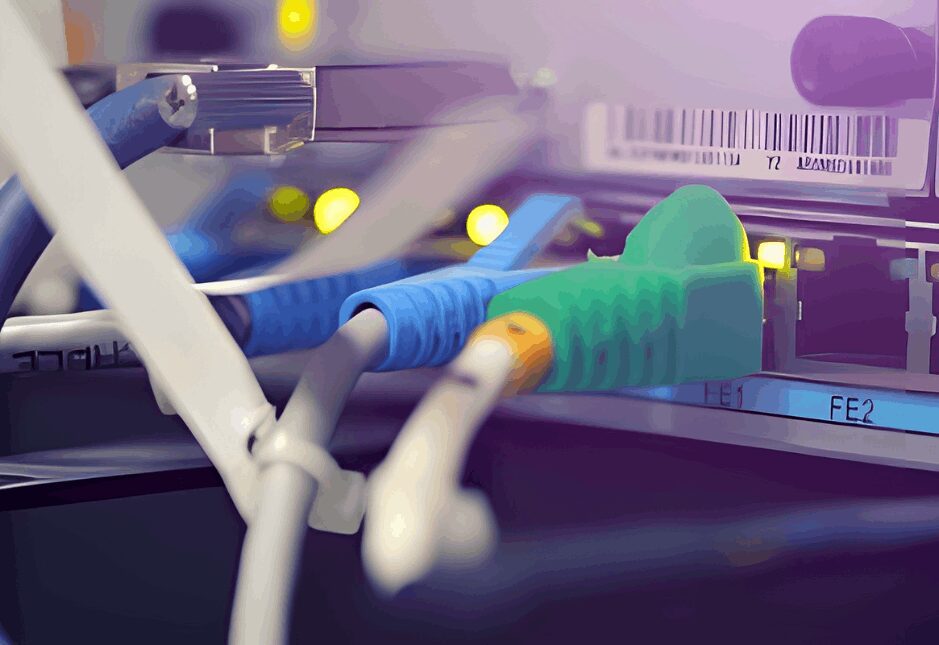ISDN had 25 million users at a time around the world, even when there were 1.3 billion regular phone lines. This telecommunication network was at its highest popularity at that time. Even though it was useful, many people have yet to learn about it now because it’s not as popular.
In this blog, we’ll discover what is ISDN and who still uses it. Plus, we’ll investigate its types and advantages.
What Is ISDN?

The integrated services digital network (ISDN) is a type of telecommunication that allows you to transfer data, speech, video, and other network services. ISDN transfers this digital information in a minimum of two channels through copper wires.
This network’s history began over forty years ago when the work started on ISDN at Bell Labs and was formally standardised in 1988.
However, this telecommunication system was difficult to implement since analog systems had been replaced on the provider side but not the customer. To resolve the issue, phone system providers needed to agree on a way to digitise the customer’s equipment.
Telecommunication companies researched how to integrate the two systems but could not find a solution for how to connect “twisted-pair” analog lines to higher bandwidth. And so, there were disagreements on which concept they should utilise.
It took eight years to standardise this system. The reason behind it is that there were newer and faster types of networks on the market. And so many telecommunication companies phased out this network.
Nevertheless, this system is still in use in some regions. In particular, a 2005 study found that Norway has around 4 ISDN channels for every 10 inhabitants.
What Are the Major Types of ISDN?

After understanding what is ISDN, you need to know that this network’s configurations are based on the speed of the transmission as well as the type of data transferred.
Here are the main types of ISDN:
1. Primary Rate Interface
The most popular type is the Primary Rate Interface (PRI). Typically, PRI is implemented in large businesses and institutions as it is the main service in this network. On top of offering 64 Kbps speed at up to 2.94 Mbps capacity, it is quite a reliable service.
Additionally, PRI is a popular way to link your system to a public switched telephone network. However, you should keep in mind that the top speed this network can hit, depends on the number of channels commonly used in the country. For instance, Europe uses 30 B channels, while North American countries use only 23.
2. Basic Rate Interface
The Basic Rate Interface/Access (BRI or BRA) is an inferior version of PRI. BRI offered voice as well as other digital services over long distances. So, this network only provides 64 Kbps in each of its two B channels, as well as an additional 16 Kbps through its D channel. In total, this network transmits a maximum of 128 Kbps of data.
With such a reduced quantity of data transmitted, it’s understandable that this network is rare. Few use it except small businesses and groups or homeowners who have no other option. However, BRI has the benefit of costing less (£3.50 – £9.50 per month) than PRI (£500 per month).
3. Narrowband ISDN
The Narrowband ISDN offers the slowest speed among the different types. Specifically, narrowband requires a lower frequency and has a speed of 64 Kbps.
It was designed only to digitise analog speech data. And so it only requires a small bandwidth of other networks.
4. Broadband ISDN
This network is called ‘Broadband’ ISDN because it surpasses 1.544 Mbps. It can transmit 2 Mbps – 1 Gbps. And so, it typically uses fiber optics instead of copper since it has a much wider bandwidth of around 10 Gbps.
Through these fiber optic cables, this network allows you to manage different types of services and transmits constant information from one source to multiple users.
In addition, it connects to the Asynchronous Transfer Mode technology, which reduces delays. However, the users can’t send information back ― they can only receive it.
How ISDN Works and Who Uses It

This type of network relies on two types of channels:
- Bearer (B): This channel transmits data such as voice.
- Data (D): This channel transfers signals and controls. However, D channels can also transmit data packets.
To better understand what is a ISDN and how it works, here’s an example:
Let’s say you call a friend. Your ‘Hello’ is encoded and transmitted on this network through one of the B channels. On the other end, your friend will receive your greeting and say hello back. However, your friend’s ‘Hello’ will pass through a different B channel. This is because B channels transfer data in one direction.
After talking and pressing the ‘End Call’ button, the D channel will transmit this signal, and so your call will end.
As many people can join the call as you have B channels, and so this network is popular with large groups such as businesses and institutions. Businesses often use this network as a backup way to communicate. This network is also a good option for rural residents since other networks are often unavailable in those regions.
The Advantages of ISDN

Since you now understand the ISDN meaning, here’s the benefits of using this network:
Faster Connection
Even at its most basic level of 128 Kbps, this network is faster than a dial-up connection. It surpasses standard phones, which only offer 2.4 Kbps.
Plus, you can scale up speed to 1 Gbps by adding more B channels and using fiber optics.
Multiple Digital Services
This network can support multiple services. This is partly due to its multiple B channels. Additionally, this network is set up to digitize data and transmit it. And so, it can offer more services than analog phone lines. For example, it can transmit speech, fax, and webpages.
Faster Installation
This network is faster to install than other modems. Plus, you can link many machines to the same copper wiring. And so, you don’t need to buy multiple analog lines.
Clearer Communication
Due to its design, this network doesn’t lose much data. This results in reduced noise, distortions, and echoes during calls.
Conclusion
ISDN is a network that operates using B and D channels to transfer data. It offers speeds of up to 1 Gbps and a variety of digital communication services like faxing and the Internet. Its capability to connect multiple devices makes it ideal for businesses and large groups. Additionally, it’s a valuable resource for rural residents as one of the few telecommunication systems accessible in remote areas. If these benefits meet your needs, ISDN might be the network to consider.

